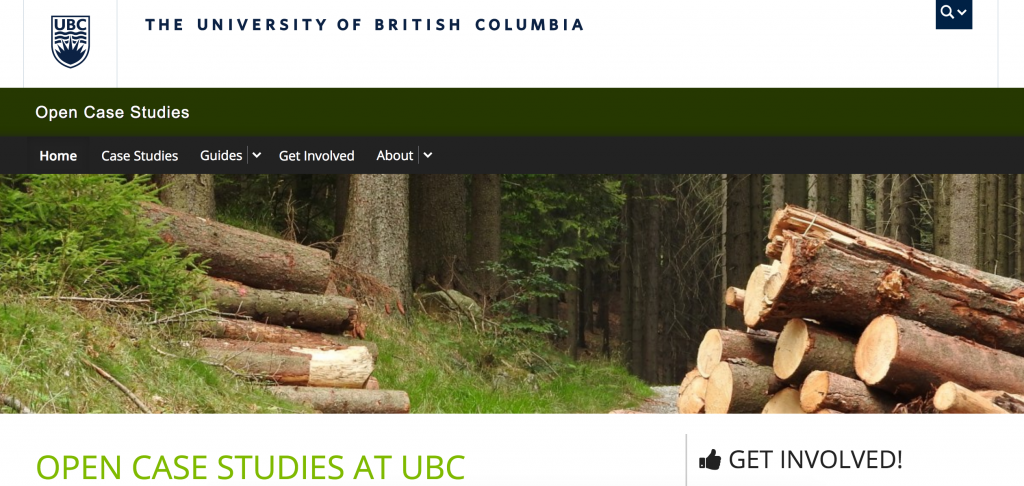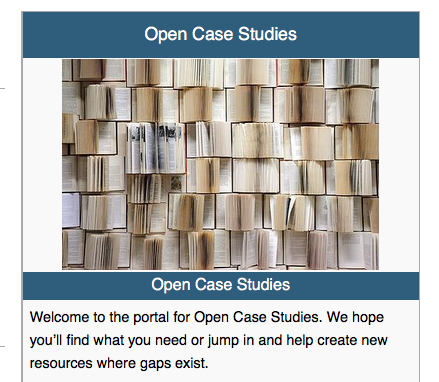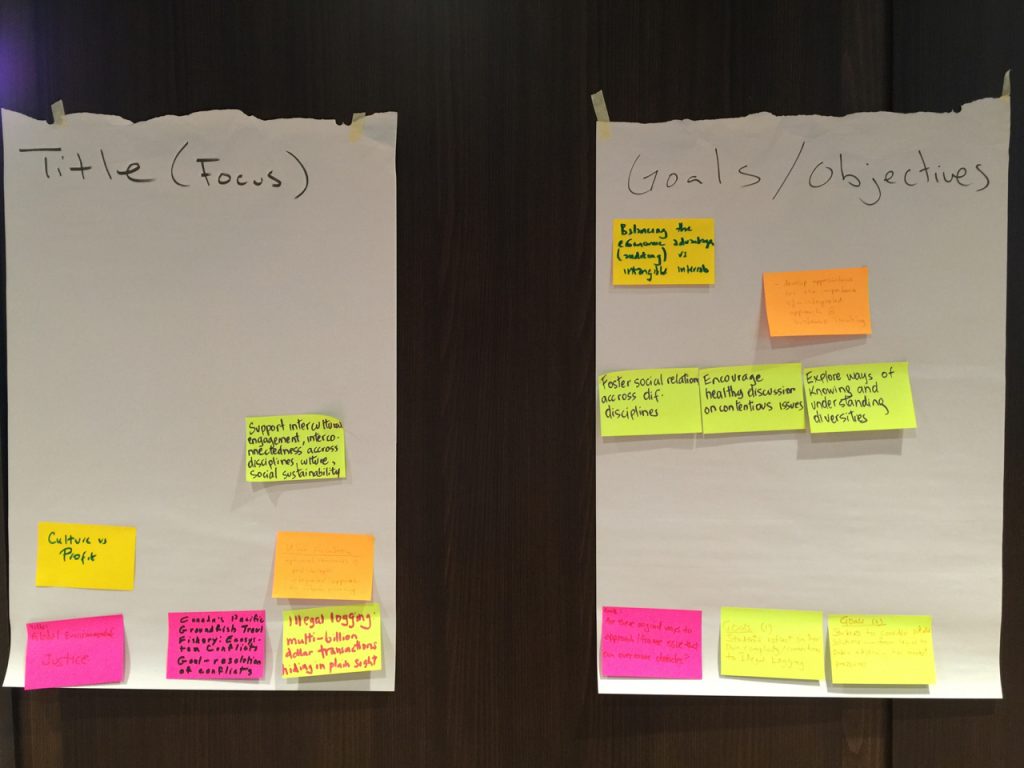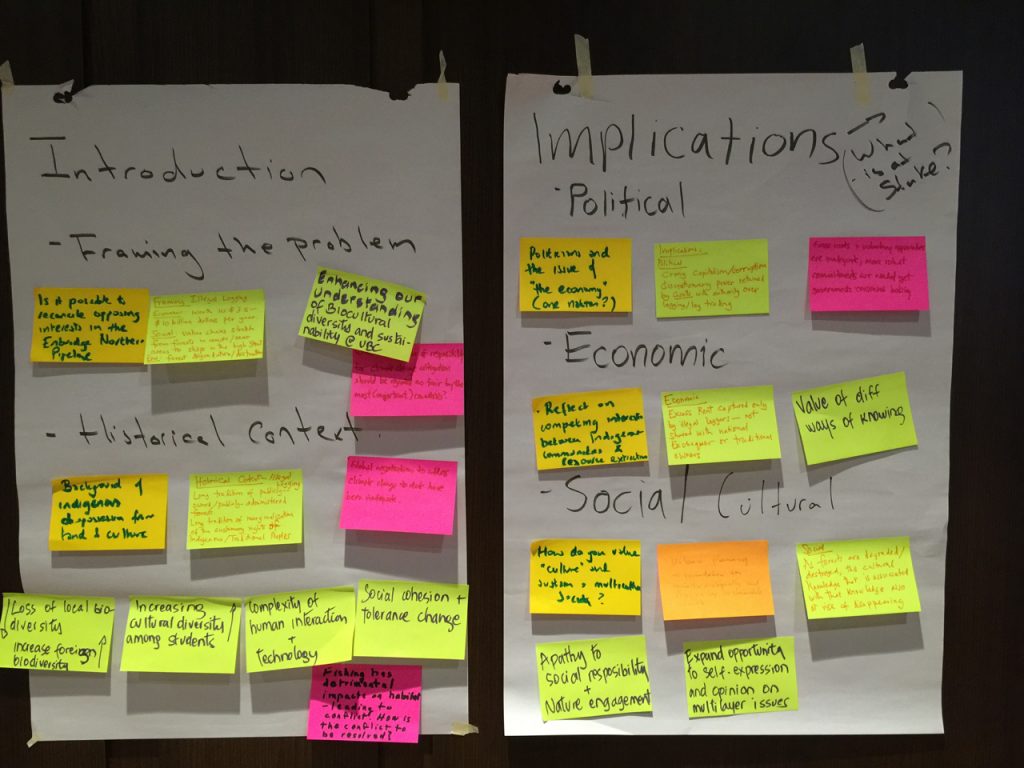I have been working with a number of people at UBC on open education projects, and we recently held a sprint for one of them: a set of open case studies on sustainability topics.
Background
Last year I worked with Daniel Munro and Jenna Omassi from the AMS (student government at UBC) on numerous open education projects, and Daniel had an idea: in addition to trying to raise awareness and adoption of open educational resources (OER) like open textbooks (and others), why don’t we try to create our own OER at UBC that others could use? Of course, many people here are creating OER (though more resources are just public and free than are open in the sense of having a license that allows reuse and remixing), but we wanted to start a larger project that numerous people could contribute to, including students.
Daniel was inspired by the ChemWiki project, which has now expanded to a bunch of other science wikis, and wondered if we could start creating something somewhat like that–where numerous people contribute to a resource that can be used in on-campus courses as well as beyond. We decided it might be good to create a set of case studies that both instructors and students could author and edit, and that could be used in courses (either with students adding to them, or doing assignments based on them, or writing entirely new case studies). And since we wanted the project to involve people from different disciplines, we thought sustainability and environmental ethics would be a good topic because those are approached from numerous disciplines.
We applied for and received a TLEF grant from UBC to get this project going. It paid for:
- a 2-day sprint to start writing the case studies, plus a prep workshop beforehand to get people used to writing on the UBC Wiki (where the case studies are hosted)
- all the support staff to help with these, plus the food! :)
- graduate research assistants to help instructors design and implement assignments using the case studies for their courses, and to write up a toolkit for teaching with these case studies, so others can benefit from their wisdom!
We found several instructors who were interested in writing case studies and got everything going for the sprint, which happened May 19-20, 2016.
I have to say: this was mostly Daniel’s idea, and he did a great deal of the work for it, so congratulations to him!
The Sprint: May 19-20, 2016
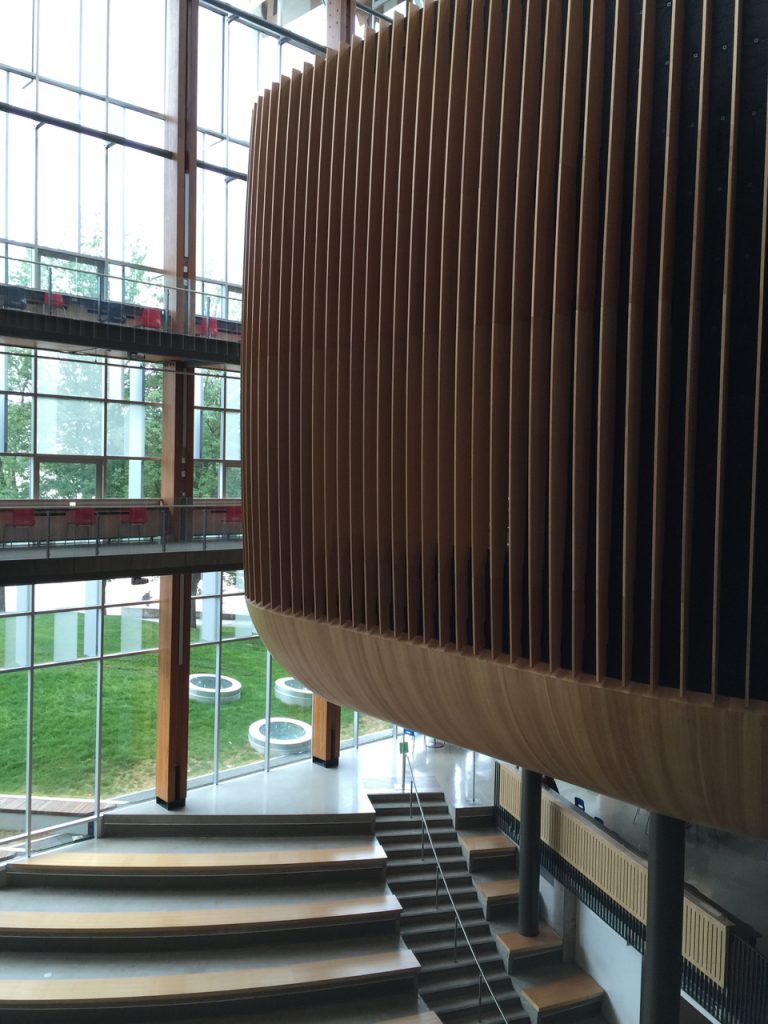
The sprint was in this funny-looking room in the UBC Student Union Building–the Nest
We invited instructors who were able to come these two days to write case studies, as well as students who wanted to help as well. Many of the students worked as partners with the instructors: they were in charge of finding openly licensed images, diagrams, or other resources for the case studies and citing them correctly, as well as helping with formatting on the UBC Wiki. Thus, for part of the sprint we had instructors and students doing different things.
Facilitators for the sprint:
- Lucas Wright and Cindy Underhill from the Centre for Teaching, Learning and Technology at UBC
- They were in charge of doing most of the facilitating of the activities during the two days, though Daniel Munro and I did some too
- They are also really knowledgeable about the UBC Wiki so could help with any questions or issues with the platform
- Erin Fields from the UBC Library
- Erin worked mostly with the students on finding and citing openly licensed materials for the case studies, but she was also on hand to answer any questions about licensing and copyright for all of us
- She is also expert at the UBC Wiki!
- Daniel Munro from the AMS (student government) and me
- We did some facilitation of activities, and then generally helped wherever needed. I did a little help with the answering Wiki questions, and I also spent a good deal of time finding images that might be used for some of the case studies
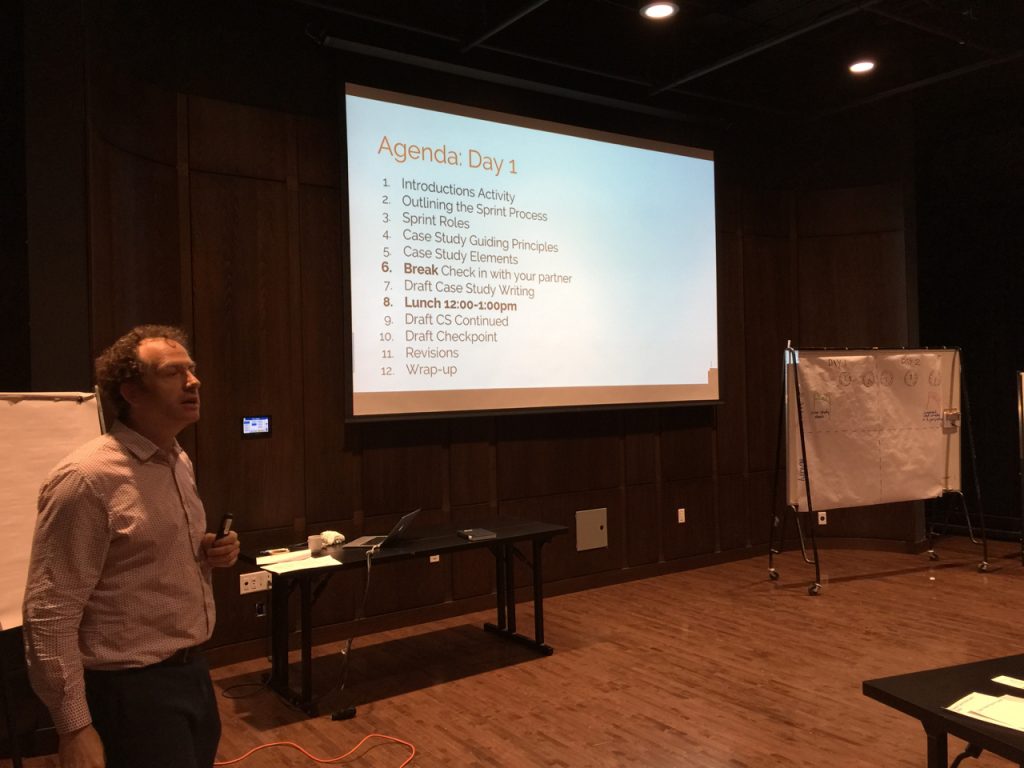
Lucas Wright on Day 1
Day 1
Introduction
We introduced ourselves and talked about the various roles of the people in the room. We also outlined the sprint process and determined what we wanted to have completed by the end of the two days, and what kind of map we would need to get there (what we’d need to have completed at various checkpoints).
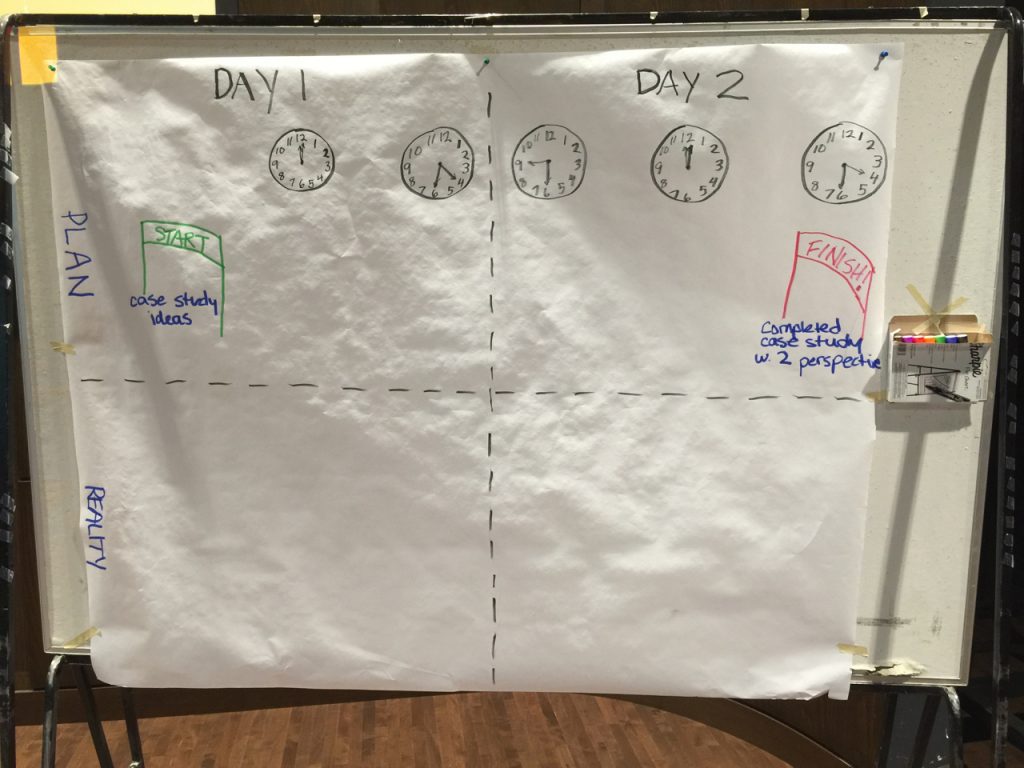
Finalizing case study principles and template (instructors)
We had tried to get, before the sprint, a finalized list of principles for the case studies (what audience should one write for? what kinds of things should be emphasized in these case studies?) as well as a template (what sections should they have?). We started that process at the prep workshop, but didn’t finish it so we did so during the sprint itself.
First, we asked people to look at the draft list of guiding principles we had created together during the prep workshop–we posted these on large pieces of paper at the front of the room.
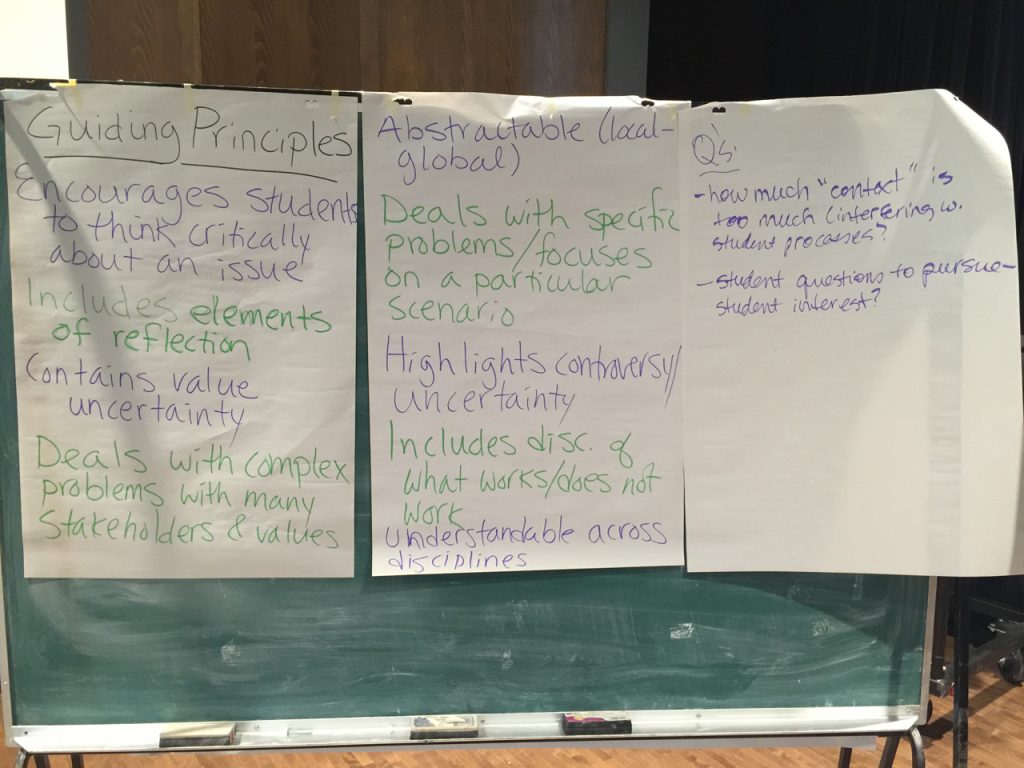
Instructors then worked in groups to see if they still agreed with these and whether they wanted to add anything. What was added were the questions off to the right.

Daniel Munro putting up the template charts
Then we worked with the draft template that Daniel and I had come up with to see if people thought the headings on the template for the various sections would work for their case studies. We posted those headings on pieces of paper on the wall and then asked each person to use sticky notes to brainstorm what they would put under those headings. Through this process we asked them to consider whether anything in the template needed to be changed or added.
Student workshop
While the instructors were working on the principles and template for the case studies, the students were in a workshop in another part of the room, learning about open licenses and how to find and cite openly licensed resources for the case studies. See this student sprint guide for information about what they learned about and what their role was during the two days of the sprint.
Starting writing
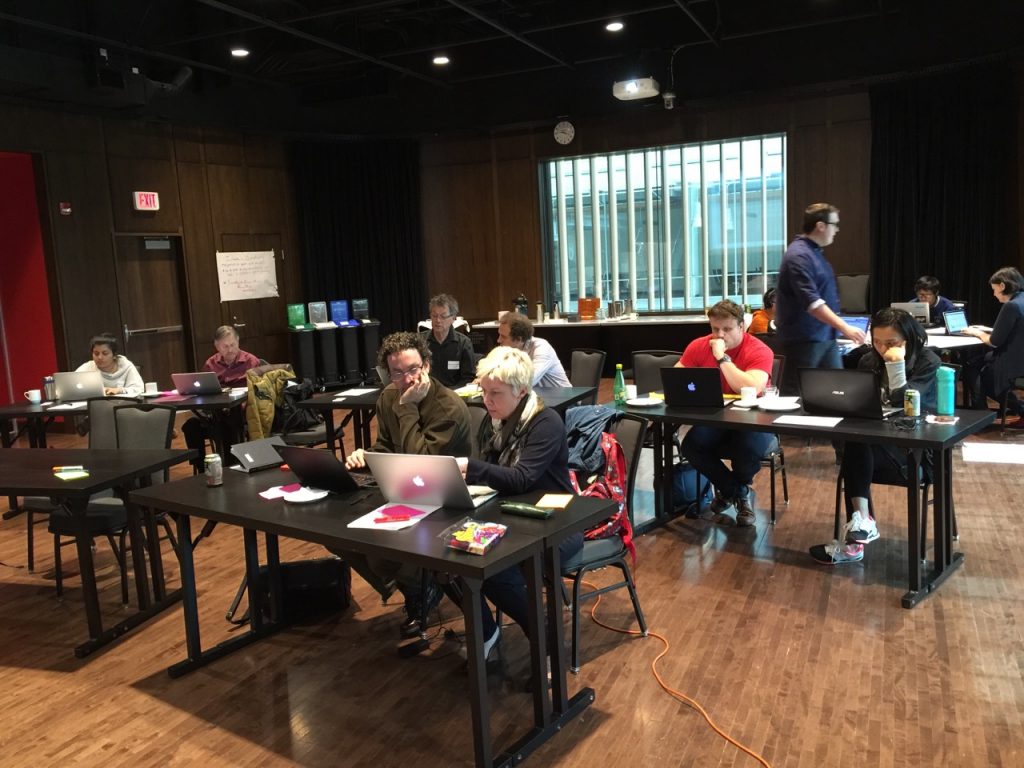
Working on the case studies, day 1
Instructors then began writing their case studies, and students worked with them in various ways. Some instructors wanted students to search for openly-licensed visuals or other content for the case study.
The students then started putting those resources on a “resources” page for each case study. Here are a few of the resources pages that students and instructors added materials to:
Students also helped with the wiki; for example, one instructor ran into issues with the UBC Wiki and lost some content, so he wrote his text in Word and then a student transferred that to the UBC Wiki later.
Lunch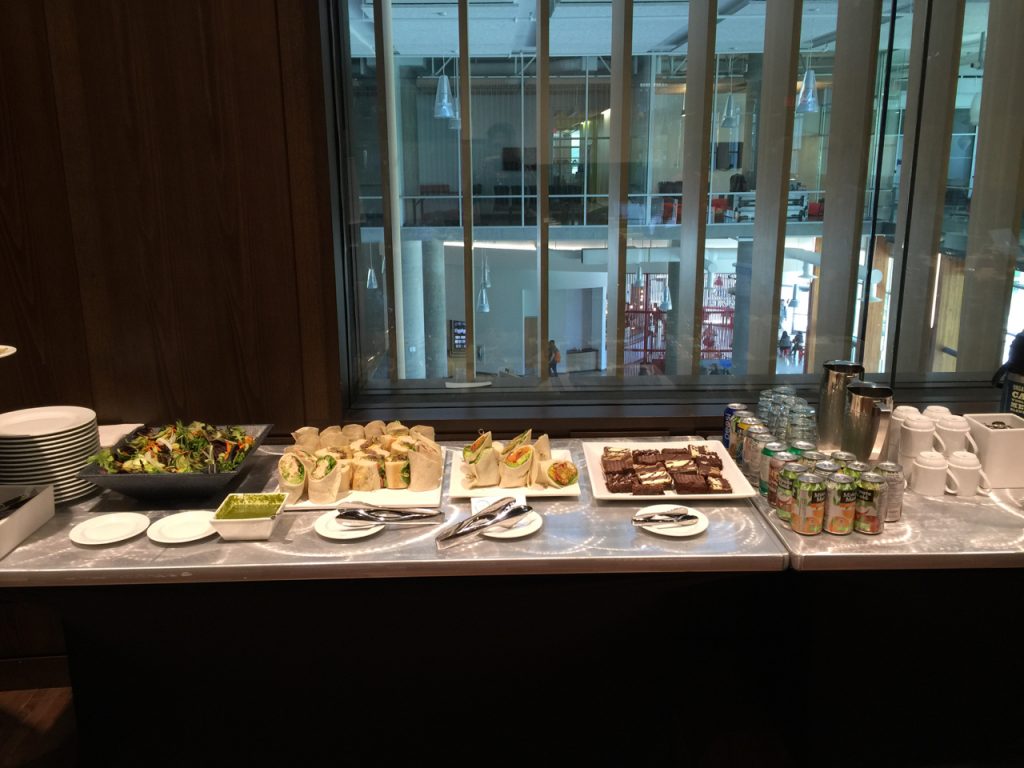
We gave everyone a full hour break for lunch so they could leave and get some fresh air, take a walk, whatever!
Checkpoint: giving feedback
After lunch we stopped to talk about what people had been able to write so far, and what they’d like help with from others. The instructors shared with the group what they had done and whether any questions had come up for them that they wanted to talk about, or whether they wanted any particular sort of feedback from others.
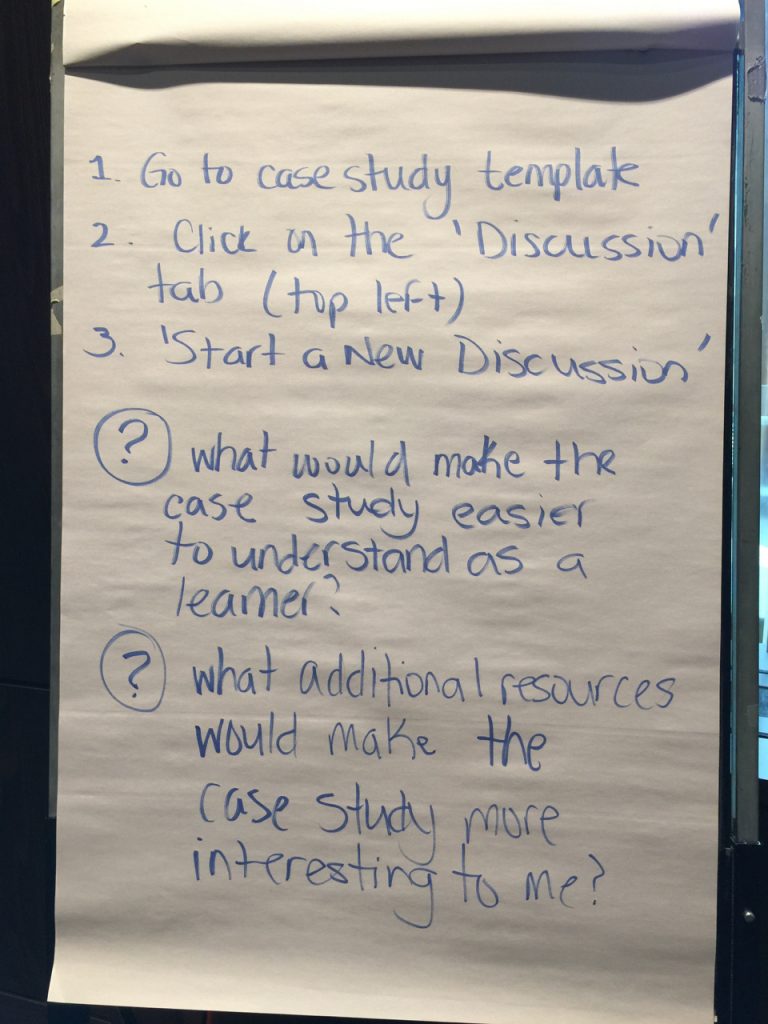 During this time the students were reading over the drafts and putting comments on them on the “talk” section of the wiki pages where the draft case studies were. The idea here was to see if the case studies are understandable from a student perspective. You can see the questions students were addressing on the “talk” pages, in the image to the left.
During this time the students were reading over the drafts and putting comments on them on the “talk” section of the wiki pages where the draft case studies were. The idea here was to see if the case studies are understandable from a student perspective. You can see the questions students were addressing on the “talk” pages, in the image to the left.
The discussion amongst the instructors took longer than we had thought it might (though it was a good discussion!), and though we had hoped to have more time for writing at the end of the day, we ended up just wrapping up after this discussion.
We finished by revisiting our roadmap for the sprint, seeing what we had done out of our plan, and saying what we would start the next day with.
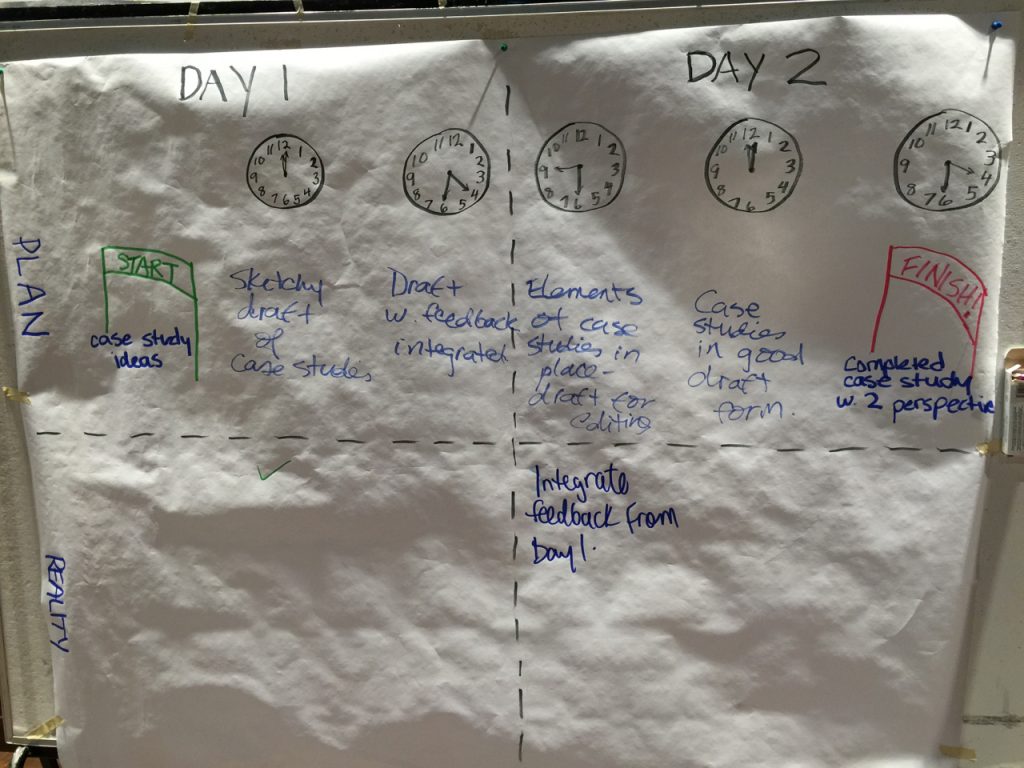
Day 2
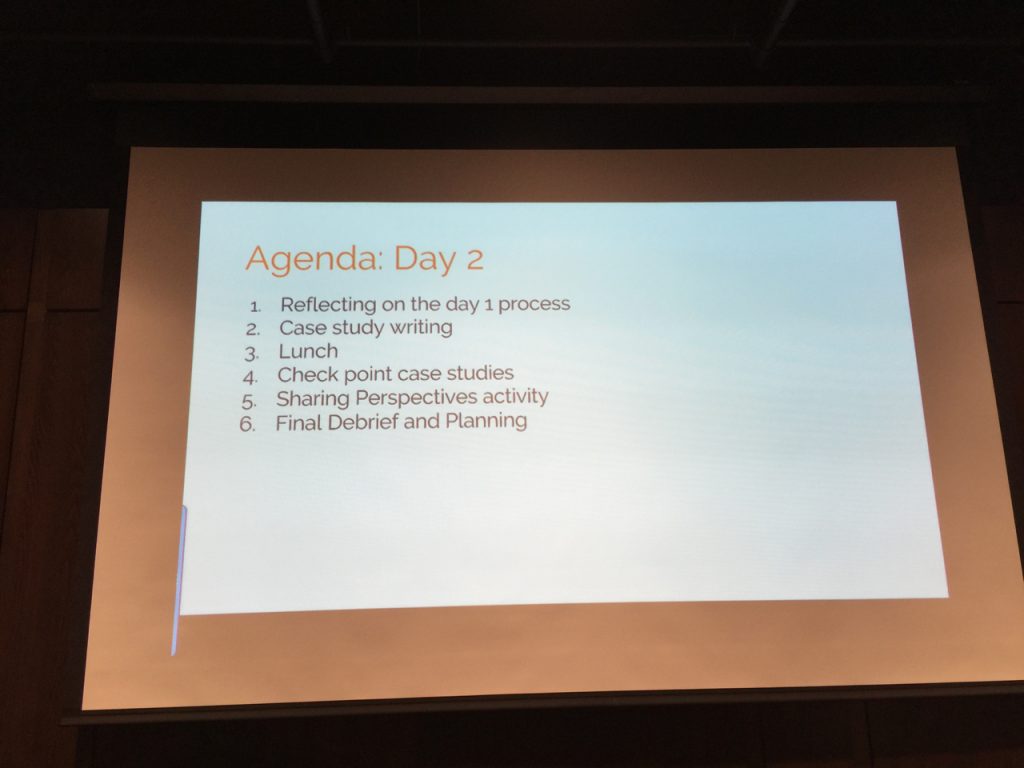
We started off day 2 by revisiting some of the feedback from our discussion, and from the talk pages, from day 1. Then a good deal of time was spent working on the drafts of the case studies, with instructors writing and students doing the same sorts of things as the previous day–e.g., helping with finding and citing resources, helping with formatting on the wiki.
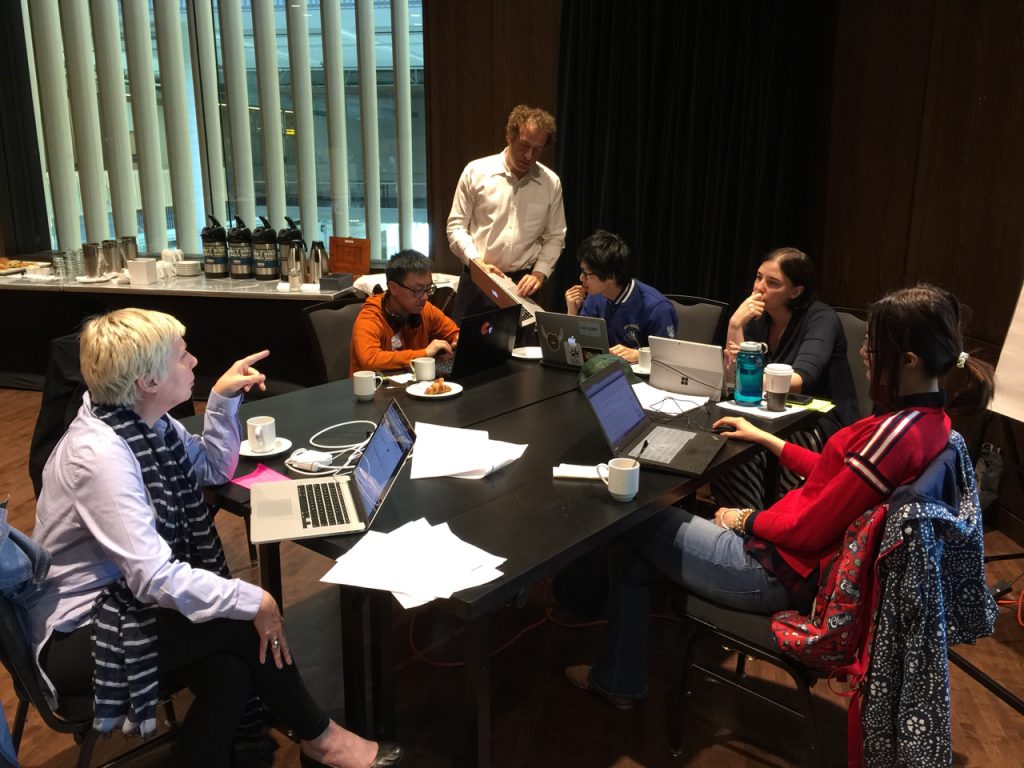
Students working with Erin Fields (near blue bottle), Lucas Wright (standing), and Cindy Underhill (blonde hair)
Fewer people could attend on day 2, so the room was a little emptier, but there was still a great deal of work going on!
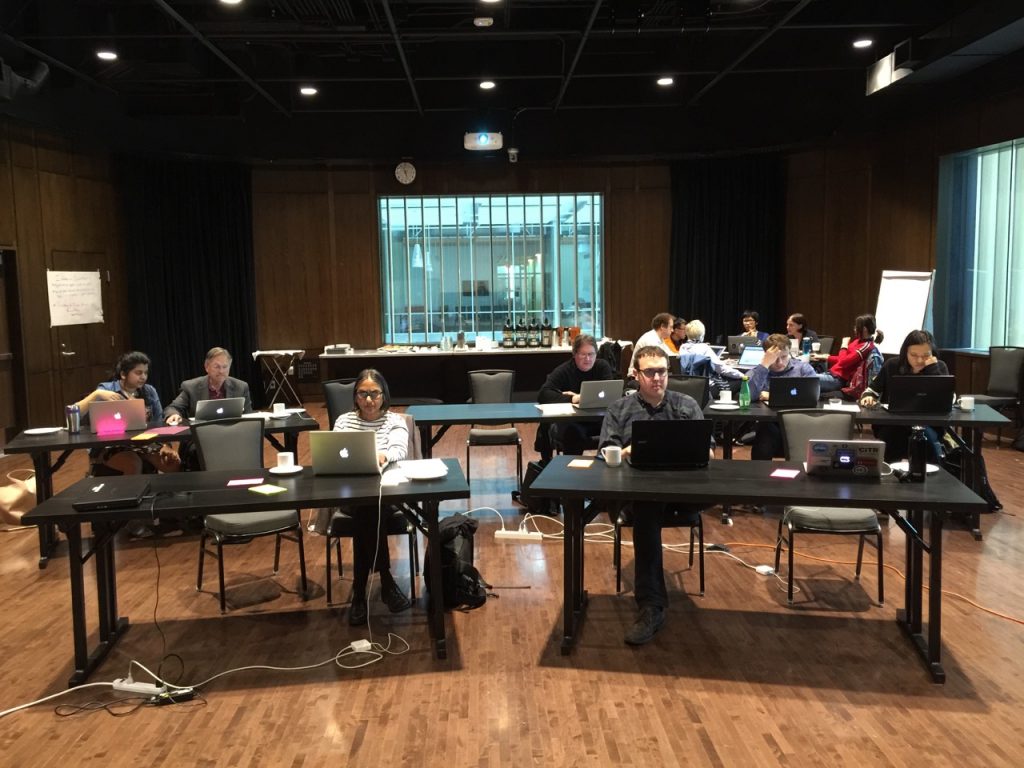
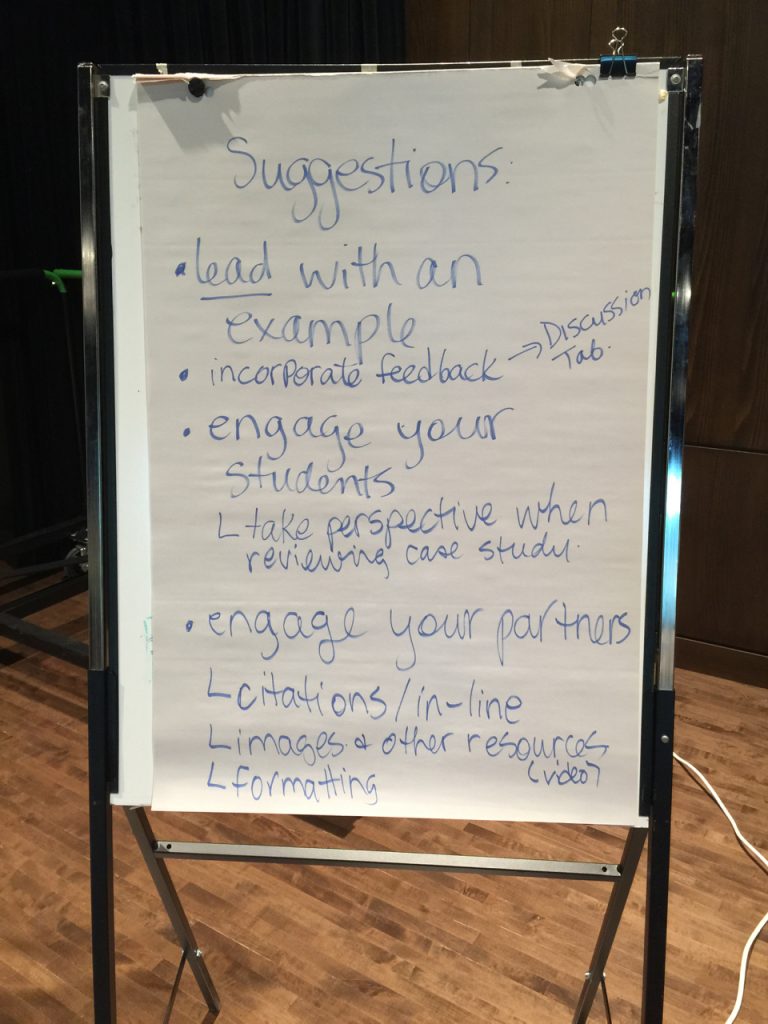 We had some suggestions for day 2 that we put up on a sheet of paper, including reminding people of some feedback we had discussed the day before: it’s helpful to include a specific scenario or example in the case study, and to think about the student perspective when writing the case study.
We had some suggestions for day 2 that we put up on a sheet of paper, including reminding people of some feedback we had discussed the day before: it’s helpful to include a specific scenario or example in the case study, and to think about the student perspective when writing the case study.
Lunch
We had another full hour break for lunch…
What would an X do?
After lunch we asked instructors to take a look at two other draft case studies and approach them from their own disciplinary perspective. The questions we asked them to consider are:
- How would an XX approach responding to the problem outlined in this case study, and what are some responses they might offer?
- What elements of the case would they be most likely to focus on and why?
- What kinds of questions would they ask?
- What kinds of disciplinary approaches or methodology might they use?
- In answering these questions, draw from existing literature from this discipline where possible, considering especially how similar problems have been approached.
We assigned each instructor to answer these questions for two other draft case studies. They did so on a dedicated section of each case study. For example, see the “What would an X do?” section on the Forestry case study.
Wrap up
I had to leave early on day 2, but I think the group wrapped up by talking about next steps. They asked instructors to finish their draft case studies on their own if they weren’t done already, and talked about how we were going to hire graduate teaching assistants to work with them over the summer to incorporate the case studies into their teaching.
Finished products?
I’m not sure how many of the draft case studies are finished yet, as of mid-June 2016, as I’m still checking in with instructors (summer break means not everyone is around!). Here, though, are links to the case studies that were at least partly completed during the sprint:
There are also a few other people who are interested in the project and writing a case study or two, but who couldn’t make it to the sprint. So more will be added later!
Making the case studies look nicer
Having them on the UBC Wiki is great for collaborative authoring, but finding them and displaying them on the wiki isn’t the best. So I’m going to apply for a grant from BCcampus to set up a WordPress site where we can showcase the case studies. They will still be editable from the wiki and then the edits will just automatically show up on the website through the magic of wiki embed (at least, that’s the plan). So stay tuned!
Documents
We have posted many of our process documents on the UBC Wiki, in case they are of use to anyone. They include:
Update a year later–new website
We now have a website for the case studies (as referenced above under “making the case studies look nicer”), which has links to all the documentation, the case studies, and more! http://cases.open.ubc.ca
